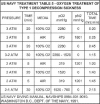Gaseous microemboli and hyperoxia
Figures


Comment on
-
In vitro evaluation of the air separation ability of four cardiovascular manufacturer extracorporeal circuit designs.J Extra Corpor Technol. 2006 Sep;38(3):206-13. J Extra Corpor Technol. 2006. PMID: 17089505 Free PMC article.
-
Arterial bubbles from the venous line.J Extra Corpor Technol. 2006 Sep;38(3):214-5. J Extra Corpor Technol. 2006. PMID: 17089506 Free PMC article. No abstract available.
References
-
- Floyd TF, Shah PN, Price CC, et al. . Clinically silent cerebral ischemic events after cardiac surgery: their incidence, regional vascular occurrence, and procedural dependence. Ann Thorac Surg. 2006;81:2160–6. - PubMed
-
- Tovar EA, Del Campo C, Borsari A, et al. . Postoperative management of cerebral air embolism: gas physiology for surgeons. Ann Thorac Surg. 1995;60:1138–42. - PubMed
Publication types
MeSH terms
Substances
LinkOut - more resources
Full Text Sources
